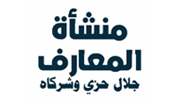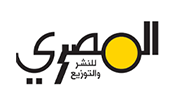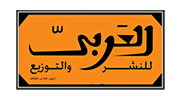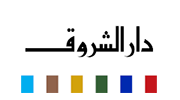Content
ASVS has also shifted from providing only server-side controls to covering all applications and APIs. Lunchbox meeting @ Ibuildings.nl on what is new for the new version of the OWASP ASVS standard level 1. This emphasizes the importance of continuously monitoring and updating API security measures to stay ahead of evolving threats.
The second step that security practitioners can take is to identify where APIs are vulnerable to broken authentication. Assessing your APIs for broken authentication vulnerabilities on a regular basis, both pre-production and in production, will give you a picture of how big the problem is for your organization. Identify those that present the highest risk and make a plan to address them.
Time and Cost Factors to Attain a FedRAMP ATO
However, in the latest version, less impactful controls have been retired and the mobile section is planned to be replaced by Mobile Application Security Verification Standard (MASVS). From version 4.0 onwards, the OWASP community has decided that ASVS will solely focus on being the leading standard for web apps and cover modern agile and DevSecOps practices. In 3.0, several new sections were added, including Web Services, Configuration, and Modern (Client) based apps owasp proactive controls to make the standard widely applicable. Special attention was given to the security of more responsive applications with extensive add-ons like HTML5, RESTful APIs, and SAML authentication. â— Using it as a well-defined metric for application owners and developers who could verify the level of security their applications possessed. Ensuring secure consumption of APIs requires careful consideration and implementation of security measures at every step of the process.
It is also very rare when organizations provide developers with prescriptive requirements that guide them down the path of secure software. And even when they do, there may be security flaws inherent in the requirements and designs. When it comes to software, developers are often set up to lose the security game. The OWASP is a non-profit community of tens of thousands of contributors committed to promoting software security through various measures like creating frameworks, tools and education programs.
Upcoming OWASP Global Events
Integrating directly into development tools, workflows, and automation pipelines, Snyk makes it easy for teams to find, prioritize, and fix security vulnerabilities in code, dependencies, containers, and infrastructure as code. Supported by industry-leading application and security intelligence, Snyk puts security expertise in any developer’s toolkit. For any of these decisions, you have the ability to roll your own–managing your own registration of users and keeping track of their passwords or means of authentication. As an alternative, you can choose to managed services and benefit from the cloud’s Serverless architecture of services like Auth0. It is impractical to track and tag whether a string in a database was tainted or not. Instead, you build proper controls in the presentation layer, such as the browser, to escape any data provided to it.
- Furthermore, organizations should also have a policy that dictates not to use software or libraries with known vulnerabilities or to phase them out if they are already in use.
- This type of vulnerability has been detected in 94% of the applications tested by the OWASP team.
- The depth of OWASP ASVS kept on increasing with time and the culmination of community efforts and feedback led to the introduction of the latest version of ASVS, i.e.
- This may result in unauthorized access and increased attack surfaces, exposing sensitive data to malicious parties.
- This can happen if an API does not correctly validate user permissions before granting access to object properties.
â— The APIs have an adequate authorization, essential session management parameters, and authentication to access all the web services. â— The business logic is designed to address security flaws like repudiation, spoofing, data theft, tampering, and other attacks. The chapter on communication requirements guides the developers to use strong encryption or transport layer security at all times.
For Secure Development Training
Starting from the bottom of the list, these are the OWASP Top 10 API security risks that organizations need to be aware of in 2023 and specific measures that can be taken to mitigate them. Developers write only a small amount of custom code, relying upon these open-source components to deliver the necessary functionality. Vulnerable and outdated components are older versions of those libraries and frameworks with known security vulnerabilities. The answer is with security controls such as authentication, identity proofing, session management, and so on. For those aiming to enhance the level of their application’s security, it is highly recommended to spare some time and familiarize themselves with the latest version of the Application Security Verification Standard. This document not only helps the security professional but also the developers who could get some serious motivation in order to build security into the product from the start.
- As the volume of APIs that organizations use continues to rise, it’s paramount to keep track of their function, endpoints and accessibility directives to maintain overall protection for your API ecosystem.
- This includes incorporating a secure code review system, regular source-code analysis, and an application security education program for developers.
- The Open Web Application Security Project (OWASP) is a nonprofit foundation dedicated to improving software security.
- Without rate limiting, an attacker can exploit this vulnerability by sending a large number of requests in a short time, leading to a Denial of Service (DoS) attack.
Of all the projects that make up the OWASP methodology, the most popularly known are the testing guides and the vulnerability top ten. With the rising level of threats and the continuing intensity of community efforts, we really believe that the ASVS project will adapt to the changes and keep improving upon itself. â— The APIs have proper input validation in case their parameters are transiting from lower to higher trust levels. â— Output data is properly encoded and its context is well-protected from infiltrators.
But developers have a lot on their plates and asking them to become familiar with every single vulnerability category under the sun isn’t always feasible. Even for security practitioners, it’s overwhelming to keep up with every new vulnerability, attack vector, technique, and mitigation bypass. Developers are already wielding new languages and libraries at the speed of DevOps, agility, and CI/CD.

Ensuring secure API consumption requires careful consideration and implementation of security measures at every step of the process, from design and development to testing and deployment. The latest release of the OWASP API Security Top 10 is a valuable resource for organizations to understand the current state of API security and take proactive measures to mitigate potential risks. Unsafe consumption of APIs occurs when an application fails to validate, filter or sanitize the data it receives from external APIs. This can lead to security vulnerabilities like injection attacks or data leakage. As organizations increasingly rely on third-party APIs to provide critical functionality, ensuring safe consumption becomes even more crucial to prevent attackers from exploiting these integrations. The OWASP Proactive Controls is one of the best-kept secrets of the OWASP universe.
Quick Access
Failing to Limit Authentication Attempts can make APIs vulnerable to credential stuffing and brute force attacks. Credential stuffing is the act of trying to authenticate with lots of different credentials, usually from another security incident, in the hopes that some of them work. It’s similar to, but different from brute forcing, which is attempting to authenticate by trying different passwords. When an API doesn’t limit the number of authentication attempts from a single IP address or for a single login, it can be vulnerable to these attacks. An API that allows users to configure weak passwords is subject to more than one type of attack.
Improper inventory management pertains to the absence of sufficient control over the APIs utilized by an organization. This may result in unauthorized access and increased attack surfaces, exposing sensitive data to malicious parties. As the volume of APIs that organizations use continues to rise, it’s paramount to keep track of their function, endpoints and accessibility directives to maintain overall protection for your API ecosystem.
OWASP Top 10 Proactive Controls
The OWASP Top 10 comprehensively lists the most critical web application security risks and their corresponding mitigation strategies. First launched in 2003, the OWASP Top 10 list is updated every three to four years as a way for organizations to benchmark their security vulnerabilities and better protect themselves from cyber threats. This article will highlight the changes in 2023’s OWASP Top 10 and compare them with the last update from 2021. ASVS Level 2 is something that security experts recommend for most applications.







